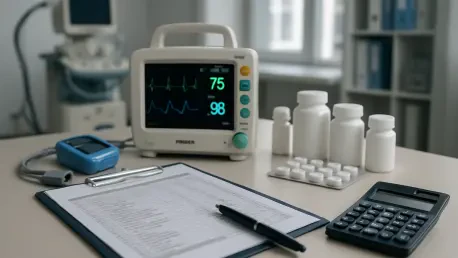In a groundbreaking move that could redefine healthcare delivery in the UK, the Department of Health and Social Care (DHSC) has unveiled a transformative strategy for medical technology procurement within the National Health Service (NHS). With an annual spend of roughly £10 billion on MedTech, the NHS has traditionally leaned toward the most budget-friendly options, often at the expense of long-term patient benefits. However, the newly introduced value-based procurement guidelines signal a departure from this cost-centric mindset. The focus is now on prioritizing effectiveness and patient outcomes over initial price tags. This shift aims to enhance care quality while potentially saving billions in the long run by investing in technologies that deliver sustainable results. As this initiative gains traction, it promises to address systemic inefficiencies and place patient well-being at the forefront of decision-making, setting a new standard for healthcare innovation.
Pioneering a New Procurement Model
The essence of this initiative lies in a strategic pivot toward long-term value rather than short-term savings. Historically, procurement decisions within the NHS have been driven by immediate cost considerations, often sidelining technologies that, while pricier upfront, could yield better health outcomes. The DHSC, in partnership with NHS Supply Chain and the NHS London Procurement Partnership (LPP), is spearheading a pilot program across 13 NHS trusts to test this value-based approach. Full implementation is anticipated by early 2026, with projections suggesting substantial financial savings alongside improved patient care. Health Minister Zubir Ahmed has emphasized the need to move away from reactive spending, advocating for investments that reduce waiting times and bolster system efficiency. This perspective reflects a growing recognition that strategic spending on effective solutions can create a more resilient and future-ready healthcare framework for all stakeholders involved.
Beyond the financial implications, this model seeks to redefine how patient outcomes are prioritized in procurement processes. By evaluating medical technologies based on their overall impact rather than just cost, the NHS aims to ensure that patients receive the most effective treatments available. This approach is not merely about purchasing equipment; it represents a cultural shift within the system, encouraging a deeper understanding of how technology can enhance care pathways. Collaboration with suppliers is also a critical component, as their expertise can help tailor solutions to specific patient needs. The initiative underscores a commitment to sustainability, ensuring that resources are allocated in a manner that benefits both current and future generations. Early feedback from participating trusts suggests that this holistic evaluation method could significantly reduce hospital burdens, paving the way for a more streamlined and effective healthcare delivery system across the board.
Real-World Impact Through Pilot Programs
Pilot programs within selected NHS trusts have already provided compelling evidence of the benefits tied to value-based procurement. At Barts Health NHS Trust, a specialized mesh for cardiology patients at high risk of infection was initially met with skepticism due to its cost. Yet, the results spoke volumes, with reduced infection rates and fewer hospital readmissions leading to savings of approximately £1,100 per patient each year. Additionally, the development of the BLISTER tool under this framework resulted in over £100,000 in annual savings while simultaneously enhancing patient outcomes. These tangible successes highlight how investing in innovative technologies, despite higher initial expenses, can yield significant clinical and financial returns. Such outcomes are a testament to the potential of this approach to transform not just procurement practices but the very nature of patient care within the NHS.
Another striking example comes from University Hospitals of Leicester NHS Trust, where remote monitoring for implanted cardiac devices was adopted at a cost of £500 to £600 per patient. The pilot demonstrated a remarkable 43% reduction in hospitalizations and a notable decrease in clinical follow-up time, showcasing both operational efficiency and improved patient health. These results emphasize the broader implications of focusing on value over cost, as technologies that might seem expensive at first glance can drastically cut down on long-term healthcare expenses. The success of these pilots is fueling optimism that scaling this approach across more trusts could fundamentally alter how medical technology is integrated into patient care. By prioritizing solutions that offer lasting benefits, the NHS is setting a precedent for how healthcare systems can balance fiscal responsibility with the imperative to deliver top-tier medical services.
Building a Sustainable Future for Healthcare
Reflecting on the journey, the rollout of value-based procurement marked a pivotal moment for the NHS, as it shifted focus from mere cost-cutting to a comprehensive assessment of technology’s impact. The collaboration between government bodies, NHS trusts, and suppliers fostered an environment where innovation thrived, leading to better patient pathways and outcomes. Looking ahead, the expansion of this strategy to more trusts by 2026 offers a clear path toward systemic improvement. Stakeholders are encouraged to continue refining evaluation criteria to ensure that every investment maximizes both clinical and financial returns. As the NHS builds on these early successes, the emphasis must remain on fostering partnerships and leveraging data from pilot programs to guide future decisions, ensuring that the healthcare system evolves into a more effective, patient-centered entity for years to come.









